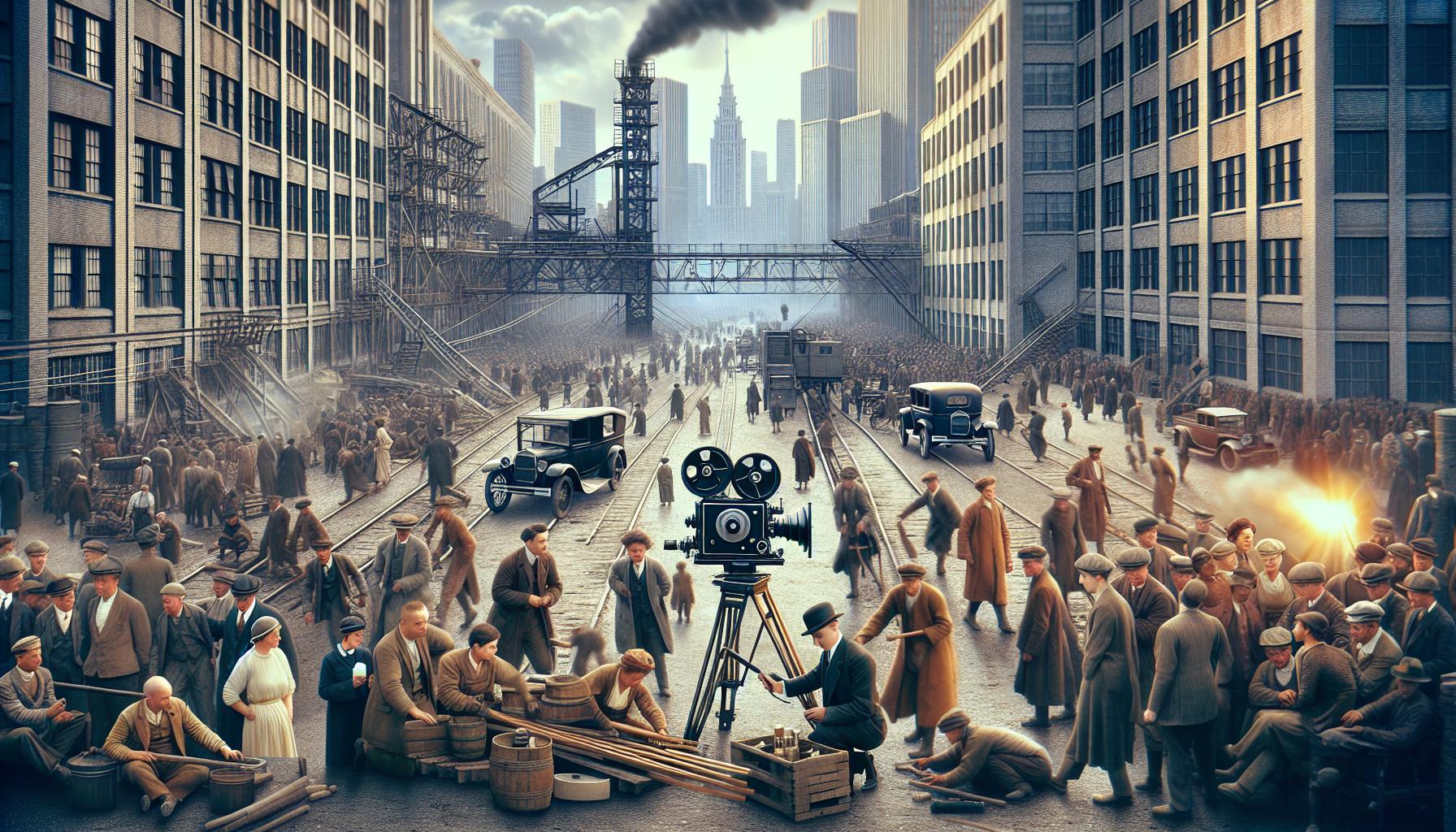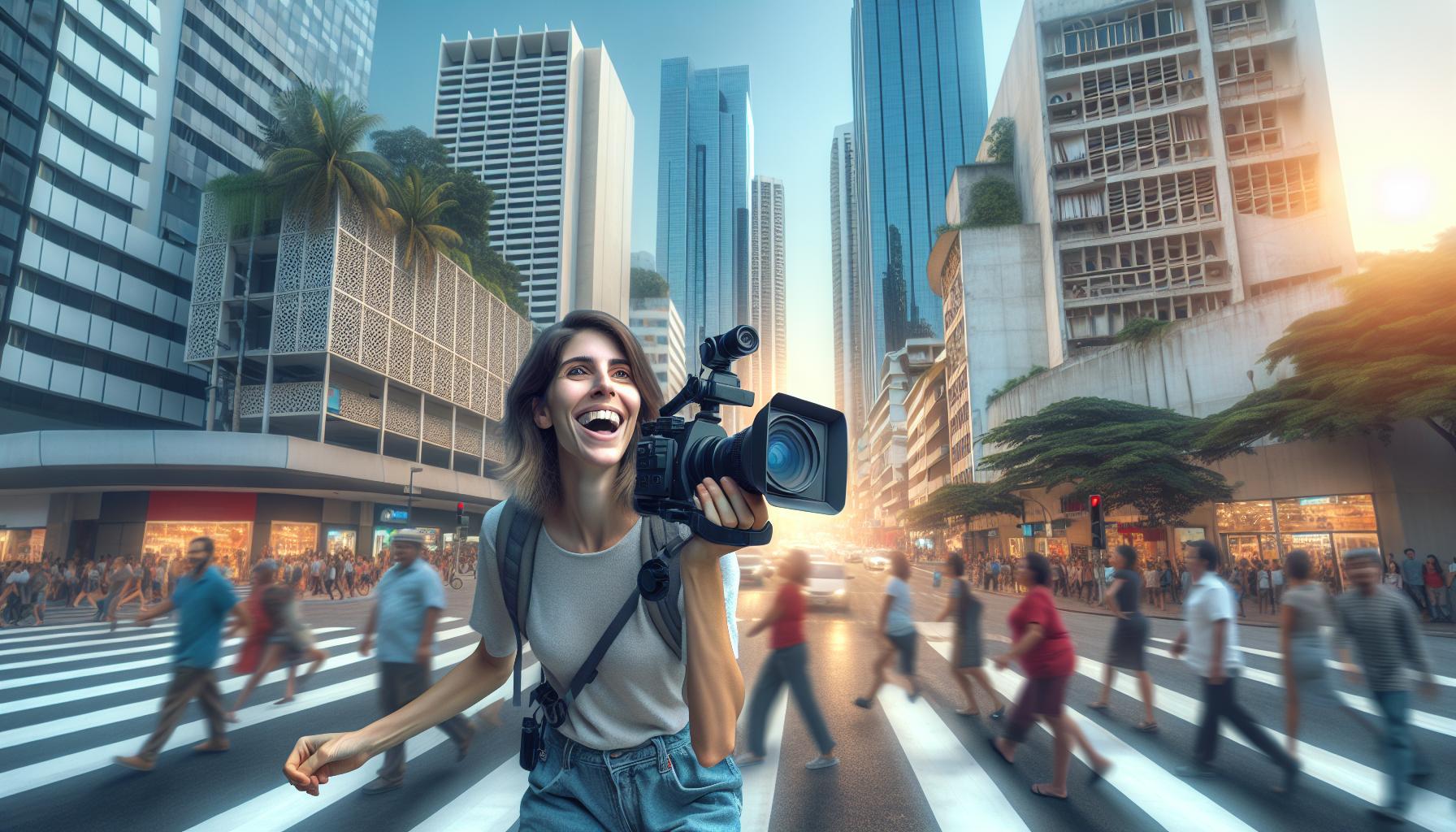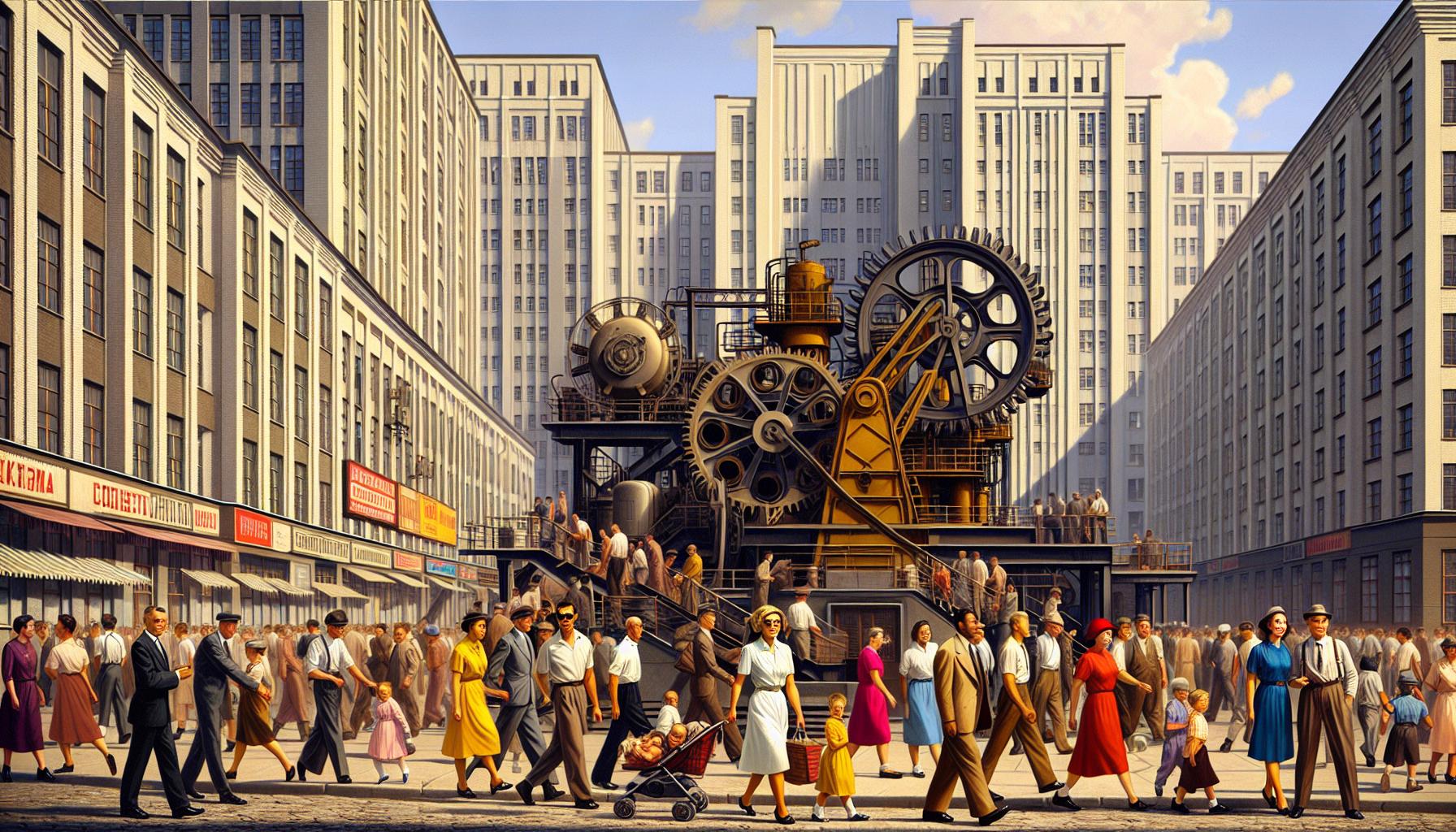Key Takeaways
- Revolutionary Documentary: “Man with a Movie Camera” redefines the documentary genre through innovative techniques and a focus on visual storytelling without a traditional narrative.
- Pioneering Cinematic Techniques: Dziga Vertov employs groundbreaking methods such as rapid editing, montage, and unique camera angles to emphasize the rhythm and energy of urban life in Soviet Russia.
- Cultural Context: The film reflects the societal changes and ideals of the late 1920s in Soviet Russia, showcasing the influence of constructivism and the importance of collectivism and industrialization.
- Active Observer Role: Vertov transforms the viewer’s experience by positioning the audience as active observers, encouraging engagement with the unfolding reality rather than passive reception.
- Enduring Legacy: The film’s innovative approaches continue to inspire contemporary filmmakers and scholars, influencing the evolution of documentary filmmaking and insights into modern cinema.
- Thematic Depth: Themes of modernity, observation, and the interconnectedness of urban life permeate the film, illustrating the complexities of life in a rapidly industrializing society.
In the realm of cinematic innovation, Man with a Movie Camera stands as a groundbreaking masterpiece that challenges traditional filmmaking. Created by Dziga Vertov in 1929, this silent documentary captures the rhythm of urban life in Soviet Russia, showcasing the power of the camera as a tool for storytelling. With its experimental techniques and striking visuals, it invites viewers to explore the relationship between reality and film.
This analysis delves into the film’s unique structure and its pioneering use of montage, offering insights into Vertov’s vision of capturing life unfiltered. By examining the techniques employed and the film’s cultural context, one can appreciate how Man with a Movie Camera not only redefined the documentary genre but also influenced generations of filmmakers. Understanding this film is key to grasping the evolution of cinema as an art form.
Man With A Movie Camera Analysis
“Man with a Movie Camera” is a seminal work that showcases Dziga Vertov’s revolutionary approach to documentary filmmaking. Released in 1929, this silent film captures the dynamism of urban life in Soviet Russia, vividly presenting the everyday experiences of its inhabitants. Vertov employs innovative techniques, such as rapid editing, double exposure, and unique camera angles, to explore the concept of capturing reality.
The film lacks a traditional narrative, instead relying on visual imagery to convey its message. It presents a continuous flow of life, emphasizing the interconnectedness of urban activities. The use of montage and juxtaposition illustrates the rhythm of city life, revealing the harmony between human activity and technological progress.
Significant cultural and historical contexts enrich the film’s analysis. It illustrates the Soviet ideals of collectivism and industrialization, reflecting the societal changes of the 1920s. Vertov’s vision extends beyond mere documentation; he aims to create an experience, inviting audiences to engage with the film’s rhythm and energy.
“Man with a Movie Camera” has profoundly influenced the documentary genre. Its innovative techniques serve as a foundation for future filmmakers, inspiring generations to explore creative storytelling through visual means. The film’s enduring legacy highlights its importance in understanding the evolution of cinema.
Historical Context

“Man with a Movie Camera” emerged during a transformative period in cinematic history, marked by significant artistic experimentation and political upheaval in Soviet Russia. The film reflects the cultural environment of the late 1920s, where art sought to both engage with and challenge societal structures.
The Era of Silent Film
Silent film dominated the early 20th century, characterized by visual storytelling without synchronized sound. The absence of dialogue compelled filmmakers to innovate through visual techniques. “Man with a Movie Camera” exemplifies these advancements, utilizing montage, rapid cuts, and striking camera angles. This period also saw an increase in audience engagement, as viewers interpreted visual cues to derive narrative meaning. Artists like Vertov capitalized on this by challenging traditional storytelling, emphasizing the power of images over scripts.
Influence of Constructivism
Constructivism profoundly influenced “Man with a Movie Camera,” aligning with the Soviet state’s goals of promoting collective values and technological progress. This artistic movement rejected individualism, favoring an approach that emphasized functionality and social purpose. Vertov’s film embodies these principles, showcasing the synergy of machine and human life. Techniques such as montage exemplified the constructivist idea of art as a means to construct societal structures, reflecting the rapid industrialization and urbanization happening in the Soviet Union. Vertov’s vision aligns closely with constructivist concepts, inviting audiences to engage with the reality of their environment while promoting a collective identity.
Cinematic Techniques

Cinematic techniques in “Man with a Movie Camera” showcase Dziga Vertov’s groundbreaking approach to filmmaking. He employs various innovative methods that contribute significantly to the film’s impact and effectiveness.
Innovative Filming Methods
Innovative filming methods characterize Vertov’s style. He utilizes handheld cameras to create a sense of immediacy and authenticity in everyday scenes. This technique allows the camera to engage directly with the urban environment, capturing spontaneous moments of life. Vertov also employs unique perspectives, including extreme close-ups and wide-angle shots, to emphasize the interconnectedness of urban experiences. The use of time-lapse photography accelerates action, illustrating the dynamic nature of the city. These methods collectively enhance the visual narrative, inviting viewers to perceive urban life through a fresh lens.
Use of Montage
The use of montage serves as a fundamental element in “Man with a Movie Camera.” Vertov orchestrates a rapid succession of images to convey the rhythm and energy of city life. This technique juxtaposes distinct scenes to create meaning, reassembling fragments of reality into a cohesive visual language. By employing rhythmic editing, he captures the essence of Soviet collectivism, portraying the collective experiences and shared human endeavors. The montage not only drives the narrative forward but also stimulates emotional responses, engaging audiences with the vibrancy of urban existence. Vertov’s innovative application of montage remains a hallmark of modern cinematic storytelling.
Themes and Interpretations

“Man with a Movie Camera” intricately weaves themes of modernity and observation into its narrative fabric. These themes reflect the film’s commitment to portraying the essence of Soviet urban life in the late 1920s.
The Nature of Modern Life
The film captures the vibrancy and complexity of urban life through its portrayal of daily activities, labor, and leisure. Vertov emphasizes the rapid pace of industrialization and the effects of modernity on society. Urban spaces become dynamic settings where individuals engage in various tasks, illustrating collective experiences shaped by technological progress. The emphasis on machinery and mechanization underlines a shift from traditional forms of life to a society driven by industry and innovation. Scenes showcasing public transportation, factory work, and communal activities highlight the interconnectedness of individuals in a bustling metropolis, reinforcing the idea that life in the modern world is a tapestry of shared experiences.
The Role of the Observer
The observer’s role in “Man with a Movie Camera” transforms conventional storytelling by placing the viewer in an active position. Vertov employs various filming techniques to capture reality unmediated, allowing audiences to perceive life as it unfolds. The camera becomes an extension of the observer, capturing spontaneous moments without the influence of narrative structure. Vertov invites viewers to engage intimately with the urban landscape, prompting them to form connections and interpret the unfolding events. This unique perspective challenges traditional cinematic practices, promoting a participatory experience that aligns with Soviet ideals of collective observation and shared understanding. Ultimately, the observer’s role evolves into a mechanism for exploring and understanding the complexities of modern life.
Impact and Legacy
“Man with a Movie Camera” significantly shaped the landscape of documentary filmmaking and continues to resonate within film studies. Its innovative techniques and cultural context paved the way for future cinematic advancements.
Influence on Documentary Filmmaking
“Man with a Movie Camera” introduced groundbreaking techniques that transformed documentary filmmaking. Vertov’s focus on visual storytelling without a traditional narrative inspired generations of filmmakers. His use of montage set a precedent for creating emotional resonance through rapid cuts and layered imagery. Documentaries like “Chronicle of a Summer” (1961) and “The Act of Killing” (2012) draw upon Vertov’s methods, illustrating the legacy of his approach. Additionally, the film’s emphasis on capturing authentic moments encourages contemporary documentarians to explore raw, unfiltered realities.
Reception in Film Studies
“Man with a Movie Camera” garners extensive examination in film studies programs worldwide. Scholars recognize its theoretical contributions, particularly in the realms of cinematic form and representation. Critics often highlight its challenge to conventional filmmaking norms regarding narrative structure and audience engagement. The film’s innovative practices remain central to discussions on realism and modernity in cinema. Its status as a seminal work influences both academic discourse and artistic exploration, ensuring its relevance in cinematic analysis.
Dziga Vertov’s Visionary Approach To Filmmaking
“Man with a Movie Camera” stands as a testament to Dziga Vertov’s visionary approach to filmmaking. Its innovative techniques and focus on the raw essence of urban life revolutionized the documentary genre. By inviting audiences to experience the rhythm and energy of Soviet cities, Vertov challenged traditional narrative structures and emphasized collective observation.
The film’s legacy endures in contemporary cinema, inspiring filmmakers to explore the boundaries of visual storytelling. Its impact on documentary filmmaking remains profound, shaping how stories are told and experienced. As scholars continue to analyze its theoretical contributions, “Man with a Movie Camera” solidifies its place as a cornerstone of cinematic innovation and artistic expression.